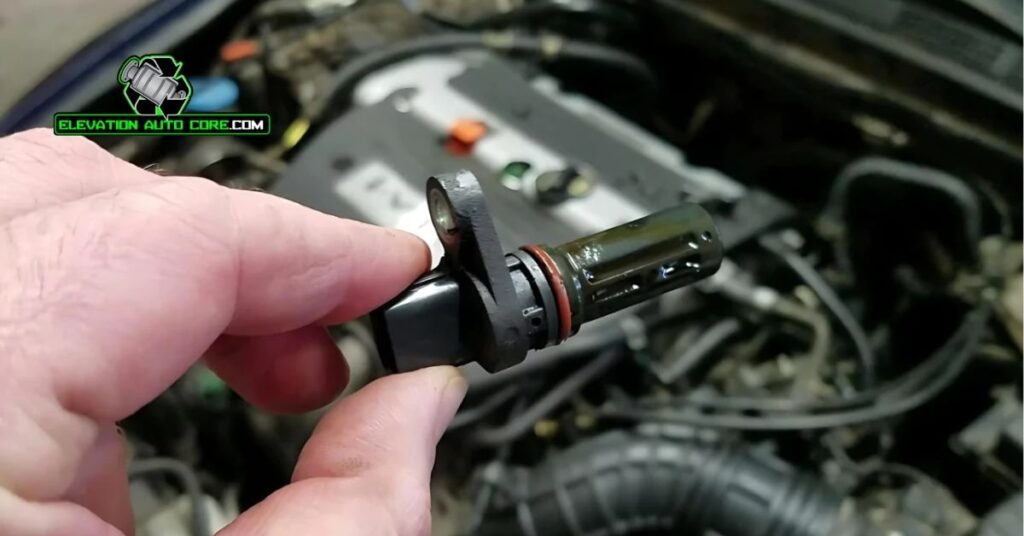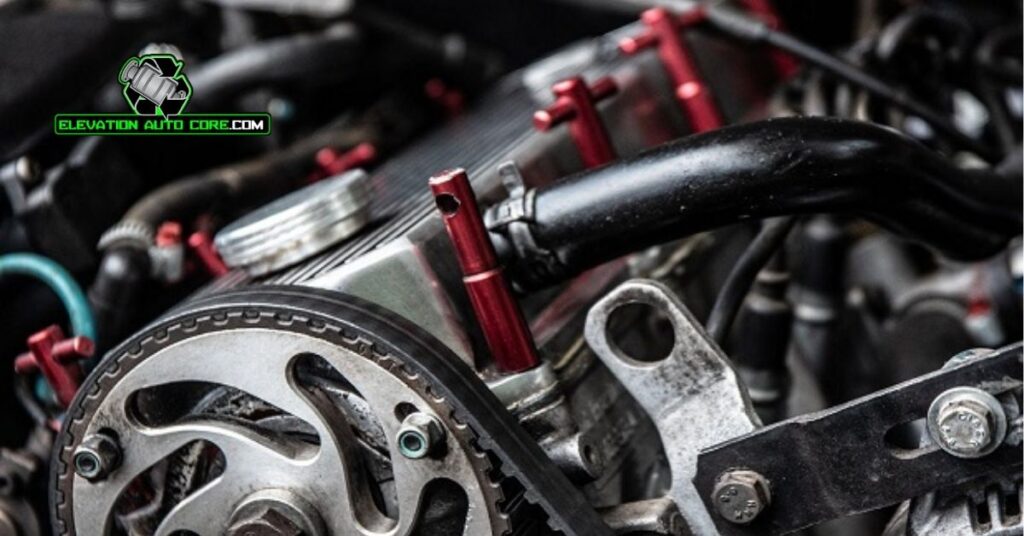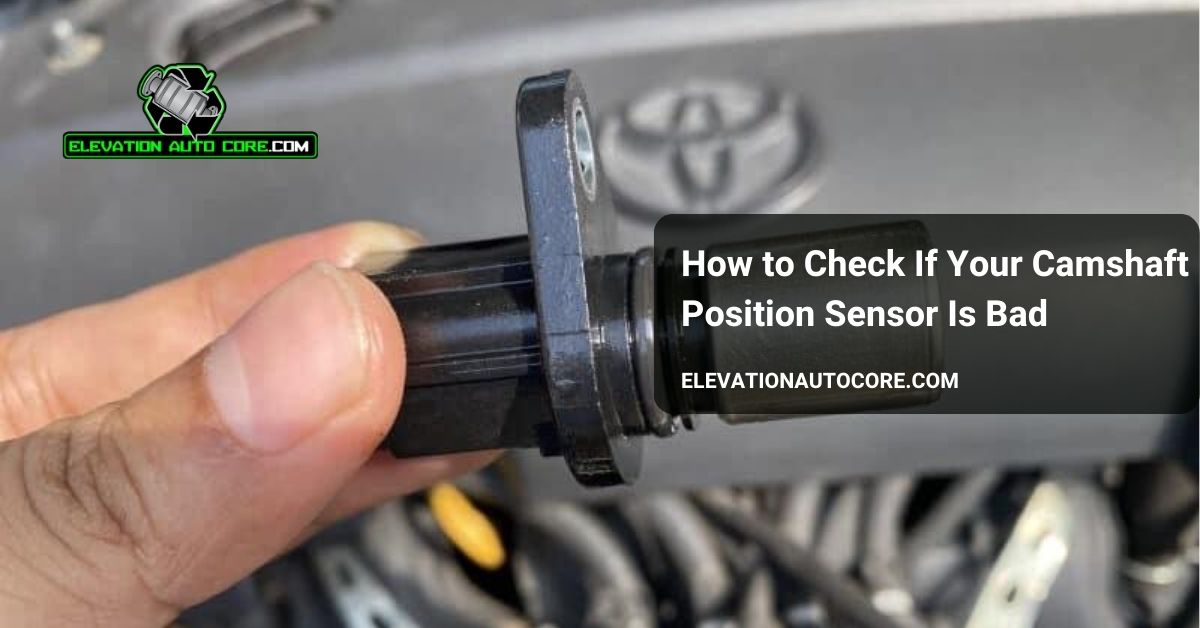Is your car struggling to start or experiencing unusual engine performance? A faulty camshaft position sensor could be the culprit, causing timing issues that disrupt your vehicle’s functionality. Understanding how to check if this sensor is bad can save you time, money, and prevent further damage—keep reading to learn the key signs and steps to diagnose the problem effectively.
What Is A Camshaft Position Sensor?

A camshaft position sensor monitors the rotation of the camshaft to ensure proper engine function. It provides data to your vehicle’s engine control unit (ECU) about the position of the camshaft in relation to the crankshaft. This information helps the ECU determine the correct timing for fuel injection and ignition.
Your vehicle’s engine relies on precise timing to maximize efficiency. Without accurate input from the camshaft position sensor, this timing can become disrupted. The sensor also plays a critical role in engine startup and smooth idling by coordinating valve and piston movement.
Modern vehicles often use this sensor alongside other components to improve overall performance. It’s typically located near the camshaft and varies in design depending on your car model.
Symptoms Of A Bad Camshaft Position Sensor

Recognizing symptoms of a faulty camshaft position sensor helps prevent larger engine problems. Exact signs point directly to sensor issues affecting engine performance.
Engine Misfiring Or Stalling
Misfires during acceleration may happen when the sensor sends erratic data to the engine control unit. Stalling can occur if the sensor provides no information, causing incorrect ignition timing. This disrupts normal engine operation, especially at low speeds or idle.
Difficulty Starting The Vehicle
Starting problems arise from incorrect fuel injection timing. A bad sensor prevents the ECU from determining the camshaft’s position, delaying or stopping engine ignition. These issues are most noticeable during cold starts or after extended periods of inactivity.
Decreased Fuel Efficiency
Inaccurate camshaft data can reduce fuel economy. The ECU may inject more fuel than needed when timing signals are unreliable. Frequent visits to the gas pump signal inefficient combustion caused by a failing sensor.
Check Engine Light Illuminates
A malfunctioning sensor triggers the check engine light. Diagnostic trouble codes relating to camshaft position (e.g., P0340 or P0341) confirm the problem. Scanning for codes helps pinpoint the exact issue with the sensor.
Tools Needed To Check The Sensor
To effectively check if a camshaft position sensor is bad, you’ll need exact diagnostic tools. These ensure accurate results while helping you avoid unnecessary repairs.
Diagnostic Scanner
A diagnostic scanner reads error codes stored in the ECU. Use an OBD2 scanner to detect codes like P0340 or P0341, which indicate camshaft sensor issues. Plug the scanner into the vehicle’s OBD2 port, typically located under the dashboard, to access the information.
Multimeter
A multimeter measures the sensor’s electrical performance. Set it to test resistance, voltage, or continuity. You can verify if the sensor is receiving power, sending signals to the ECU, or completely failing.
Basic Mechanic Tools
Basic tools like sockets, wrenches, and screwdrivers are necessary for accessing the sensor. You’ll likely use a socket set to remove bolts securing the sensor and a flathead screwdriver to detach connectors. Having these ensures you’re prepared for any assembly type.
Step-By-Step Guide To Inspect The Sensor

Diagnosing a faulty camshaft position sensor requires precise steps to avoid oversight. Follow these methods to verify if the sensor is causing engine issues.
Locate The Camshaft Position Sensor
Begin by consulting your vehicle’s manual to identify the sensor’s exact location. This component is usually attached near the camshaft, often on the cylinder head or engine block. Confirm its placement by referencing diagrams exact to your car model.
Check For Physical Damage Or Loose Connections
Look closely at the sensor and its surrounding area for wear or deterioration. Cracks on the sensor body, oil leaks, or frayed wires can compromise its functions. Secure disconnected wires or loose bolts before proceeding to ensure accurate results.
Test Using A Multimeter
Select a multimeter and measure the sensor’s resistance or voltage based on your user manual guidelines. Use the tool to check if consistent signals are being transmitted to the ECU. If readings fall outside the expected range, this may indicate a defective sensor.
Use A Diagnostic Scanner To Identify Error Codes
Connect an OBD2 scanner to your vehicle’s onboard diagnostic port. Use this scanner to retrieve error codes stored in the ECU, such as P0340 or P0341, that directly point to camshaft sensor problems. Cross-reference the results with your manual to confirm findings.
When To Replace The Camshaft Position Sensor

A faulty camshaft position sensor can significantly impact your engine’s performance and reliability. Replacing it becomes essential when certain symptoms and diagnostic checks confirm the issue.
Confirming Faulty Readings
Use diagnostic tools to validate sensor malfunctions. An OBD2 scanner retrieves error codes like P0340 or P0341, directly pointing to camshaft sensor problems. Verify the sensor’s electrical performance with a multimeter by checking its voltage signals and resistance. Physical inspections may reveal damage or wear, which compromises the sensor’s accuracy. Replace the sensor if it cannot maintain proper signals or connections.
Considering Vehicle Performance Issues
Persistent engine issues often indicate sensor failure. Misfires during acceleration, rough idling, and starting difficulties occur when the sensor fails to regulate timing properly. Low fuel efficiency due to inaccurate data transmission underscores the need for a replacement. A stalling vehicle further reinforces a compromised sensor as it disrupts engine timing. Prioritize replacement if performance declines even though other repairs, confirming the sensor’s critical role in engine function.
Conclusion
Addressing a faulty camshaft position sensor promptly is key to keeping your engine running smoothly and avoiding costly repairs. By understanding the symptoms and using the right tools for diagnosis, you can pinpoint the issue with confidence.
Taking proactive steps to inspect and replace a failing sensor ensures your vehicle maintains optimal performance, fuel efficiency, and reliability. Don’t overlook the importance of this small yet vital component in your car’s overall functionality.

